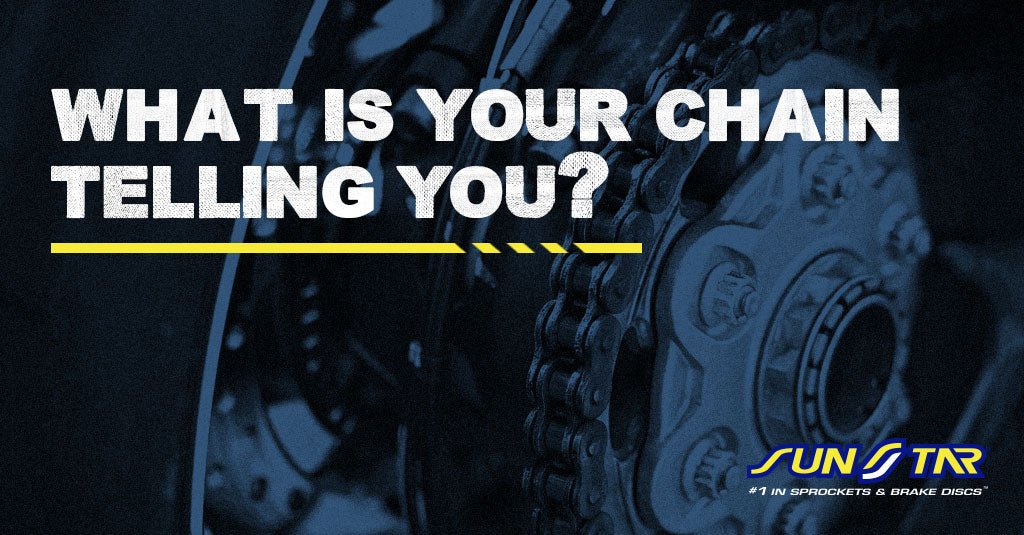
Chain of Lies
A casual glance at your chain and sprockets may suggest that everything’s AOK in the final drive department. But a closer look could reveal hidden secrets about excessive wear that could be compromising performance and safety.
Here are four quick ways to know the truth about the condition of your bike’s final drive.
1. Bend and stretch
A length of new drive chain is flexible in one direction (to easily bend around sprockets) and stiff in the other direction (side-to-side). Pinch the bike’s chain in the middle of its run between sprockets and move it side-to-side across the bike. If it moves more than an inch or so, that’s a sign of chain link wear. After extensive use and abuse, the chain’s links also become elongated with wear, resulting in larger gaps between links. This makes the chain longer (what some call chain “stretch”). If you’re close to maxing out the adjusters to achieve proper chain tension, then you’re probably looking at a well-worn chain. And, while chain links stretch with wear, sprockets do not, resulting a misalignment of the chain’s links and the sprocket’s teeth. Try pulling the chain away from the teeth at the rear of the back sprocket. If you see separation, then the chain is toast
2. Getting kinky
A healthy chain rolls smoothly and quietly. But with wear, a chain can begin to kink and bind. With the rear wheel off the ground and transmission in neutral, rotate the rear wheel by hand. Look for any kinks or binding along the chain’s length. Listen for clicking, clunks or clattering as the chain wraps around the rear sprocket. If it’s anything but smooth, it’s time to for replacement.
3. Long in the tooth
Your bike’s chain and sprockets are under a lot of stress, constantly being pulled under tremendous pressure to keep the rear wheel driving forward. As a result of that constant tug-of-war, the teeth of the sprockets become worn thin. Each tooth on a new sprocket has a flat top and the cradle between teeth create a uniform U-shape. If the teeth on your sprockets have become pointed and the groove between teeth has become irregular, it’s new sprocket time. Left alone, the gear teeth will eventually wear down and lose their ability to grip and guide the chain at all.
4. Catch a wave
Beyond observing if the teeth on your sprockets are getting long and narrow, be sure to catch if the teeth on the sprockets are beginning to lean and curl in one direction. With significant wear, a view of the sprocket profile will reveal sprocket teeth that look a bit like ocean waves rolling into shore. If allowed to wear further, the chain may ultimately skip over the bent teeth under acceleration.
Final Drive Failure
Final drive failure can be catastrophic, especially at speed. But it’s simple to avoid with routine checks. But remember, just because your bike’s chain looks clean and well-adjusted doesn’t mean it’s in good shape.
Make a point to carefully inspect your final drive each time you clean and maintain your bike. It only takes a couple minutes to determine the truth about the condition of your bike’s final drive. And if you find it’s time to replace components, replace chain and sprockets together to assure that everything meshes the way it’s supposed to. Find high-performance chain and sprocket options for your bike at sunstar-braking.com.
Have questions? Don’t hesitate to reach out to us with questions.
